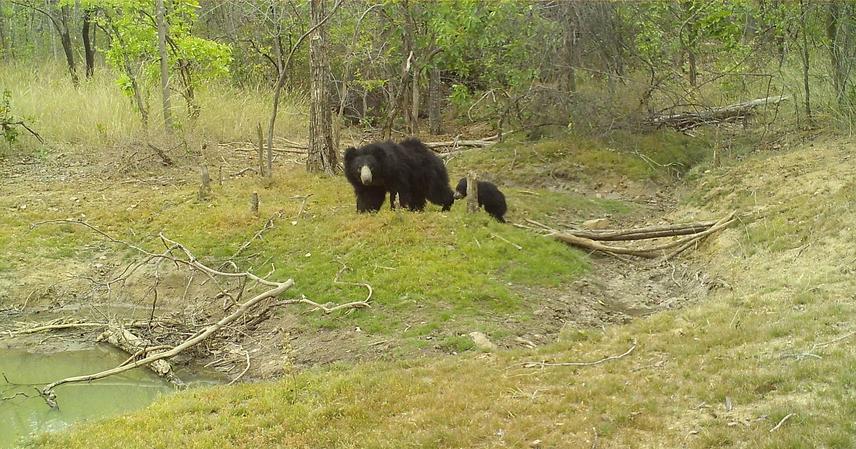Pankaj Bhure
Local communities are claiming rights over their traditional forest resources in the central Indian landscape under India’s Forest Rights Act 2006. These Community Forest Resource (CFR) areas of central India are an essential source of livelihoods for the local community through the harvesting of Non-Timber Forest Products (NTFPs), as well as a crucial habitat for globally threatened wildlife such as Sloth Bears, Indian Leopards, Striped Hyenas, Four-horned Antelopes, and others. Additionally, the region supports other species such as the Bengal Fox, Golden Jackal, Jungle Cat, and Fan-throated Lizard.

Camera trap capture of mother sloth bear and cubs in the community forest resource area of Uttar Bastar Kanker District, Chhattisgarh. © Applied Environmental Research Foundation.
Prominent threats in the region include forest fires, unsustainable NTFP harvesting practices, and chemical-based farming, all of which are known to result in habitat degradation. This leads to resource competition, which often results in human-wildlife conflict. This underscores the urgent need to spread awareness of conflict mitigation and to equip CFR Management Committees with scientific wildlife conservation knowledge, enabling them to integrate wildlife conservation into their respective management plans to conserve and restore wildlife habitats.
Among the above-mentioned species, local communities frequently encounter Sloth Bears. Thus, by selecting the Sloth Bear as an umbrella species, we aim to develop a comprehensive conservation strategy to protect this unique landscape. This project will focus on raising awareness about the ecological role of Sloth Bears and strategies for mitigating human-wildlife conflict. Recommendations such as planting vegetation based on Sloth Bears’ dietary preferences and creating waterholes to support wildlife will be proposed. These interventions will also benefit other species inhabiting the CFR areas, such as the Indian Leopard, Striped Hyena, and Four-horned Antelope, to mention a few.
In a nutshell, our proposed project aims to introduce and encourage the integration of wildlife conservation based on the collection and analysis of participatory scientific data while preparing and implementing the CFR Management Plan.